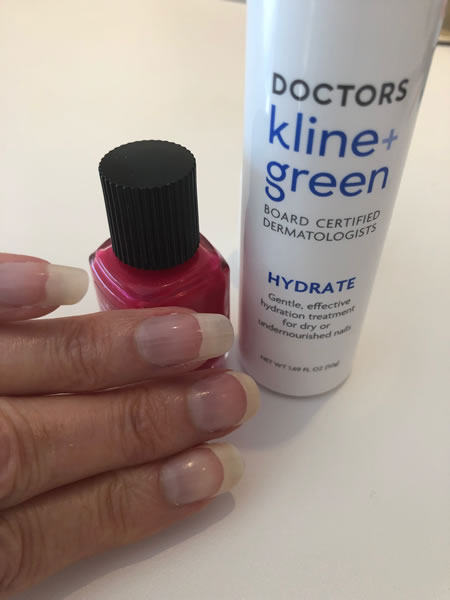How To Prevent Toenail Fungus
No one wants to experience toenail fungus (also called onychomycosis). However, it is relatively...
Painters and artists world-wide are well-aware of the term “acrylic”, but regular nail salon and nail technician visitors have a different picture in mind when they hear this word. Whether for manicure or pedicure, acrylics are the most dominating nail polish formulation in the nail industry, but unfortunately, common does not mean safe, and over time, more and more manicures can increase the risk of nail damage or nail infection due to poor nail health.
Acrylic nail polish is a liquid and powder combination resulting from a chemical reaction between acrylic polymers and acrylic monomers, with traces of monomer remaining in the final product. Methyl methacrylate (MMA) is a bonding agent used in nail products, and this monomer has been shown to cause irritation to bodily organs other than your nails, such as respiratory problems due to constant inhalation or harmful chemicals, allergic reactions such as contact dermatitis by deterioration of the natural skin barrier, as well as gastrointestinal and central nervous system (CNS) effects with headaches, nausea, diarrhea, and dizziness. (Gossavi and Alla, 2010).

Moreover, every centimeter of your skin and nails contains microscopic pores which ingest every toxin from the outside to the inside, often resulting in these toxins entering your bloodstream. Although nails seem sturdy and are composed of multiple keratin layers, they are significantly more porous than skin and thus are more susceptible to the negative effects of external toxins (UC Berkeley & Davis). In fact, the water content of the nail is determined by both internal factors (e.g., hydration levels and bodily health) and external factors (e.g.,environmental humidity). There is no surprise your nails become brittle and dry with lowered water content after soaking them in acetone for hours.
Gel nails are a type of fake nails which are produced when photo initiators within the polish allow the monomers and oligomers to harden into polymers once exposed to UV-A light. They were first introduced in the 1980s, but were removed from the market when the light curing process burned the customer’s skin (Sree Roy, 2011). Now we use UV light, which does not burn but is not much better for your skin and can cause overall health problems. Contrary to common belief, gel nails do not actually last longer than acrylics. While both acrylic and gel nails last approximately 2 weeks, gels are significantly more scratch and acetone-resistant than regular acrylic nails (Sree Roy, 2011).
While gel nail removal causes less damage to the nail bed than acrylic nail removal, you still have to soak your nails in acetone. Nails, like your other organs in your body, also age as you grow older, resulting in a slower growth rate, drier and thinning nail bed, and longitudinal ridges, which increase the nail porosity level (Martin & Zieve, 2018). Due to existing beauty standards and the pressure to look perfect, women whose nails are thin and breaking off from a nail-biting habit or natural factors (e.g., aging) are prone to covering up their nails with gels and acrylics.
However, the answer to healthier looking nails really lies in adequate nutrition through a healthy diet and moisturizing your nails on a daily basis. After experiencing the detrimental effects of getting acrylic and gel nails on a regular basis, many nail bloggers are choosing to stick with their natural nails, improving both their nail and overall bodily health. Think of it this way: if you would put it on a canvas which lasts for thousands of years, why would you put it on your body?

Whether fingernails or toenails improve your nail health with Hydrate, from Drs. Kline & Green and see how it can keep your nails strong, or restore nail strength from past issues.